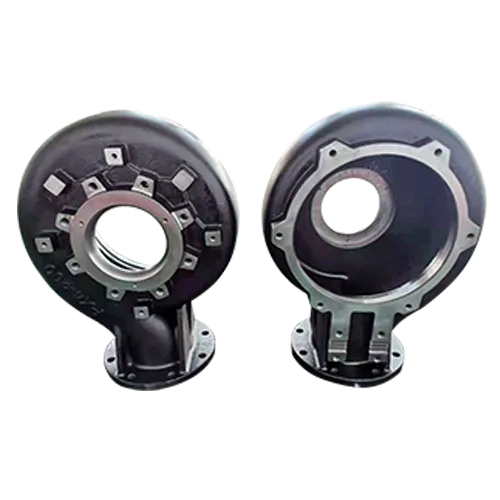Mobile:+86-311-808-126-83
Email:info@ydcastings.com
backward curved impeller
Backward Curved Impeller Design, Function, and Applications
A backward curved impeller is a type of centrifugal fan or pump component characterized by blades that curve backward relative to the direction of the airflow. This design is integral in various industrial applications due to its efficiency, performance stability, and reduced noise levels. Understanding the design and function of a backward curved impeller is essential for engineers and those interested in fluid dynamics.
Design Characteristics
The design of a backward curved impeller typically features a series of blades fixed around a central hub. Unlike forward curved impellers, which curve in the direction of the airflow, backward curved blades bend away from the direction of motion. This design minimizes the air resistance encountered by the impeller, allowing for a smoother flow of air and enhanced operational efficiency. The blade angles can be optimized for various applications, impacting factor such as flow rate and pressure.
The material used for constructing backward curved impellers also plays a significant role in their performance. They are often made from high-strength alloys, plastic, or composite materials, offering resistance to corrosion and wear. This durability is critical in industries where the impeller is subjected to harsh environments or continuous operation.
Functionality and Advantages
Backward curved impellers operate on the principle of centrifugal force. When the impeller rotates, it draws air into the hub and expels it outward, generating a significant increase in pressure. There are several advantages to using backward curved impellers
1. High Efficiency The backward curvature reduces the drag on the blades, which leads to higher efficiency and lower energy consumption compared to other designs. This characteristic is particularly valuable in applications where energy costs are a major concern.
backward curved impeller

2. Stable Performance Backward curved impellers provide stable airflow and pressure across a range of operating conditions. This stability is crucial in environments with fluctuating demand, such as HVAC systems, where maintaining consistent air quality is important.
3. Low Noise Levels Due to the design that minimizes turbulence, backward curved impellers tend to operate more quietly than their forward curved counterparts. This makes them ideal for applications in noise-sensitive environments such as hospitals and offices.
Applications
Backward curved impellers are widely used in various industries, including HVAC, automotive, and manufacturing. In HVAC systems, they are employed in air handling units and exhaust systems, ensuring efficient air circulation and ventilation. In the automotive industry, they can be found in turbochargers and superchargers, enhancing engine performance by improving air intake.
Manufacturing plants utilize backward curved impellers in dust collection and material handling systems. These systems require robust fans that can handle particulate matter while maintaining consistent airflow and efficiency.
Conclusion
The backward curved impeller represents a significant advancement in pump and fan technology, offering numerous advantages over traditional designs. Its efficiency, stability, and quiet operation make it a preferred choice in various industrial applications. As technology continues to evolve, the backward curved impeller will likely play an increasingly vital role in optimizing fluid dynamics across multiple sectors. Understanding its design and functionality can lead to more innovative and effective applications, paving the way for future advancements in engineering and sustainability.
-
Understanding Metal Casting TechniquesNewsApr.02,2025
-
Understanding Exhaust Manifolds for Enhanced Engine PerformanceNewsApr.02,2025
-
The World of Metal FabricationNewsApr.02,2025
-
Key Components for Pump and Turbo EfficiencyNewsApr.02,2025
-
Essential Tools for Automotive Maintenance and RepairNewsApr.02,2025
-
Durable Valve Components for Effective Water ManagementNewsApr.02,2025











